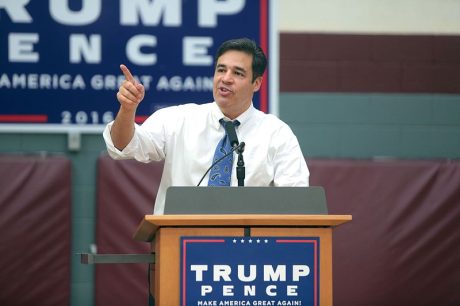
The Idaho Transportation Department’s recent presentation on a third bridge crossing over the Snake River Canyon near Twin Falls is an important step in the valley’s economic future. But there are many steps ahead and the project’s anticipated costs are likely to grow as decisions are made, or delayed.
Nonetheless, the ITD rollout of potential crossing sites and traffic impacts and travel times will help solidify the discussion, which has been talked about for years. Now, there are some real options on the table.
Everyone knows traffic is increasing at the two existing crossings, at Twin Falls’ Pole Line Road and the Hansen bridge several miles to the East. Current traffic volume is over 44,000 vehicles per day and is anticipated to be over 61,000 in twenty years, 2040. Significantly, ITD projects up to a 3 percent annual increase, up from a 1-2 percent increase in previous estimates.
The four main options presented (excluding improvements to the existing Hansen bridge which are already being planned) all offer routes which would connect with Interstate 84 at or near Jerome.
Options one and two envision a crossing bridge as a jump-off from the Pole Line Rd. and Hwy. 93 intersection West of Twin Falls, connecting to one or two existing Interstate 84 tie-ins at Jerome. Both would extend Hwy. 93 and create a direct connection for Nevada traffic.
Options three and four would go from existing Twin Falls streets, which are already quickly filling with housing, churches, schools and commercial/office development at 2700 Road and 3500 Road. Options three and four are also the most expensive; one is at $390 million and the other at $405 million.
By comparison, options one and two, which follow 2400 Road, would each cost less than $250 million. Each would take existing farm land but so far, not as much housing and commercial development.
So we have a choice to make as a regional community. Options one and two would have less immediate impact but would contribute long-term to the Valley’s overall growth, which is spreading both East and West. Traffic from Twin Falls to Boise on Interstate 84 is often bottlenecked at both the I.B. Perrine Bridge and at the interchanges.
Options three and four would reduce in-town congestion at the Perrine Bridge, but would drop traffic into rapidly-developing neighborhoods in Twin Falls and the South end of Jerome city along Golf Course Road and South Lincoln Street. In less than a decade, these areas are quickly filling up.
Regardless of the route, there will need to be overall consensus from cities and counties, as well as highway districts. Failure to come to an agreement would likely delay or doom the project. That’s why ITD has wisely put the several options on the table for discussion.
And even if there’s agreement on the best route, there are significant issues ahead, not the least of which is funding and regional competition in Idaho for highway project dollars.
Have you driven through Boise to Nampa or Caldwell recently? The Treasure Valley is rapidly growing, as are the state’s other urban areas. Pocatello, for example, recently completed improvements on the Interstates interchange Northeast of town. Those region’s needs are also important, so there would need to be some prioritizations. That will come down to legislative debate, again likely to fragment by region.
Beyond that, the bridge project is likely too big for ITD’s current highway planning, so the state would need to supplement the normal appropriations. The dollar amount isn’t known, but the state “match” might be substantial but might be met in part from a growing revenue surplus. Then there’s the federal money. Projects of this scale usually involve Congressional support, and Idaho’s delegation is well positioned to “make the case” in Washington, DC.
These steps are off in the future. For now, the task is to gather Magic Valley comment and arrive at a consensus site. That in itself will mean give-and-take of all parties, which can happen for the good of the region, but which is by no means assured. Without that, it will be just another lofty idea and a bridge too f ar.
Stephen Hartgen, Twin Falls, is a retired five-term Republican member of the Idaho House of Representatives, where he served as chairman of the Commerce & Human Resources Committee. Previously, he was editor and publisher of The Times-News (1982-2005). He is the author of two new books on Southern Idaho, “Tradition & Progress: Southern Idaho’s Growth Since 1990.” and “Spirit of Place: Southern Idaho Values Across Generations.” He can be reached at Stephen_Hartgen@hotmail.com.





